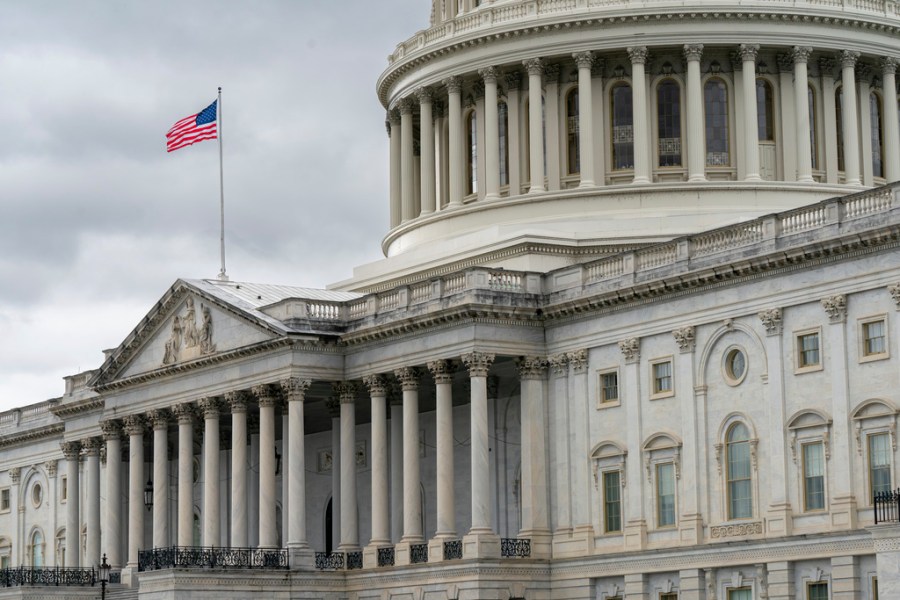
President Trump was on to something when he suggested that state governments should have the primary responsibility for handling disasters — and most other matters as well. The federal government taxes individuals who send their tax dollars to Washington, and then the feds hand back to the states more than a trillion dollars each year. Do we really need that federal middleman? Why not lower federal taxes, leaving more money with individuals? States could then access those funds to address their needs.
In fact, if Trump succeeds in drastically shrinking the federal workforce, states may have little choice but to take the lead in meeting whatever challenges they may face.
In fiscal 2023, federal transfers to state and local governments came to $1.1 trillion, about 17.6 percent of all federal spending, according to USAFacts.com.
Federal government handouts to state and local governments had been gradually rising since 1990. However, 2020 saw a significant increase as the feds started shoveling out pandemic-relief money to the states, peaking at $1.4 trillion in 2021, then declining slightly to $1.3 trillion in 2022.
It’s understandable why the government would ladle out money during the early days of the pandemic when much of the economy was shut down. But the pandemic has dramatically declined and is mostly an annoying blip today. Even so, federal handouts remain elevated.
Over half of the 2023 distribution to the states, $634.2 billion, was for their Medicaid and Children’s Health Insurance Programs. Some of the federal money went to education, highways and the Supplemental Nutrition Assistance Program (formerly known as “food stamps”). And $286.4 billion went to various other purposes. Clearly, some of those funds provide important assistance for millions of Americans.
But the point is the money initially belongs to people living in the states. The federal income tax extracts that money from those citizens and transfers it to Washington. Then federal politicians and bureaucrats return some of that money to the states — but only after Washington has extracted its pound of flesh.
If federal taxes were lower, leaving that money with taxpayers, the states would still have access to that money — they would just have to appropriate it themselves. Thus, it is possible that taxes might go up in some states to offset the loss of federal handouts. But the amount needed would almost certainly be much less than what taxpayers are spending now because the current system is rife with distorted economic incentives.
First, politicians use the handouts to gain support from voters in their home states. Of course, Rep. X won’t vote for Rep. Y’s proposed “pork barrel-spending” unless Y votes for X’s pork, which is how federal spending balloons.
Second, most states game the jointly funded, federal-state programs to maximize the federal dollars states receive. This has been a problem with the Medicaid program for decades. States find ways to appear to be spending more on health care than they really are in order to increase the federal matching funds.
Third, federal dollars can be a bailout fund for poor state management. Just look at recent wildfires in Los Angeles. There has been a lot of commentary blaming California’s elected leaders — especially Gov. Gavin Newsom (D) and Los Angeles Mayor Karen Bass (D) — for their mismanagement of state and city resources. Many of the Golden State’s “natural disasters” have been a result of, or exacerbated by, political and financial mismanagement.
But the mismanagement isn’t restricted to disasters. Various state and labor pension plans also turn to Washington when they are underfunded. And politicians come seeking federal bailout money when they mismanage certain projects, like California’s high-speed railroad. Thus, taxpayers living in well-managed states have to cross subsidize those living in poorly managed states.
Of course, even if the states were to become the primary player when addressing natural and manmade crises, Congress could still vote to provide relief in extraordinary cases.
Is the idea of cutting federal taxes and letting states handle their challenges far-fetched? That was the original idea behind the U.S. Constitution’s Tenth Amendment, which says that all powers not explicitly delegated to Washington were reserved for the states and the people. And given Trump’s effort to cut taxes and make states more responsible for meeting their needs, the time may have come.
And even if Congress couldn’t eliminate all the $1.1 trillion in federal outlays, it could cut hundreds of billions of dollars, leaving that money in the states.
Turning to the federal government for financial assistance ought to be the states’ last resort, not the first. As far as states go, “U.S.” needs to stand for Uncle Sam, not Uncle Sugar.
Merrill Matthews is a public policy and political analyst and the co-author of “On the Edge: America Faces the Entitlements Cliff.”












